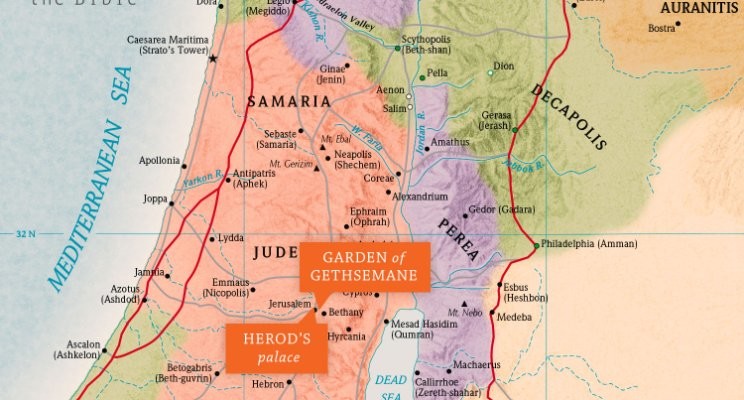In today's digital age, where technology is an integral part of children's lives, incorporating interactive elements into education has become more important than ever. When it comes to teaching the stories and lessons of the Bible, interactive tools like Bible maps open up exciting avenues for engagement, exploration, and understanding. Let's delve into the world of interactive Bible maps and discover how they captivate young minds on their journey of faith.
A Dynamic Approach to Learning
Interactive Bible maps offer a dynamic approach that goes beyond traditional teaching methods. With just a few clicks, children can embark on virtual journeys through ancient lands, exploring the landscapes where biblical events unfolded. This hands-on experience transforms passive learning into an active adventure, sparking curiosity and enthusiasm.
Making the Past Come Alive
Imagine the excitement in a child's eyes when they virtually stand on the shores of the Sea of Galilee, where Jesus performed miracles, or when they navigate through the cities where David and Solomon reigned. Interactive maps make the past come alive, allowing children to visualize and experience history in a way that textbooks alone can't achieve.
Fostering Curiosity and Exploration
Children are naturally curious explorers. Interactive Bible maps tap into this innate curiosity by allowing them to click on locations, reveal additional information, and discover the stories behind the landmarks. This interactive approach empowers children to take charge of their learning and encourages them to ask questions and seek answers.
Engaging Multiple Learning Styles
Every child learns differently, and interactive Bible maps cater to various learning styles. Visual learners benefit from the visual representations of locations, while kinesthetic learners engage with the tactile experience of clicking and exploring. Interactive tools accommodate these diverse learning preferences, making education more inclusive and effective.
Creating Meaningful Connections
Interactive Bible maps foster a deeper connection to the stories of faith. When children can virtually walk the paths of biblical figures, stand in the places where miracles happened, and visualize the challenges faced by these characters, the stories become more relatable and impactful. These connections resonate in their hearts and minds long after the lesson is over.
Promoting Collaborative Learning
Interactive learning is not limited to solitary exploration. Bible maps provide opportunities for collaborative learning as children share their discoveries, discuss insights, and learn from one another. Families, friends, and classmates can come together to explore these maps, creating a sense of community around the study of scripture.
Preparing for a Tech-Driven Future
The world is becoming increasingly digital, and embracing technology in education prepares children for the future. Interactive Bible maps not only enhance their understanding of scripture but also equip them with valuable tech skills that are becoming essential in various fields.
Interactive Bible maps offer an innovative and engaging way to introduce children to the beauty and depth of the scriptures. By blending technology with the stories of faith, we create a learning environment that sparks curiosity, encourages active participation, and fosters a lifelong connection to the Word of God. As we guide our young learners through the intricate tapestry of the Bible, let's harness the power of interactive learning and embark on a journey of exploration, understanding, and spiritual growth.




